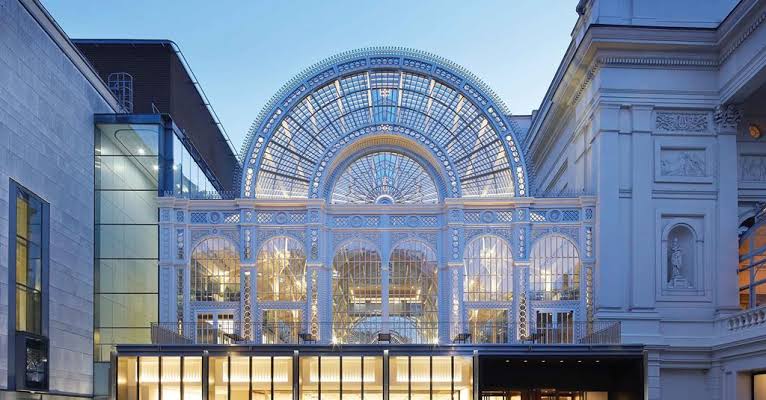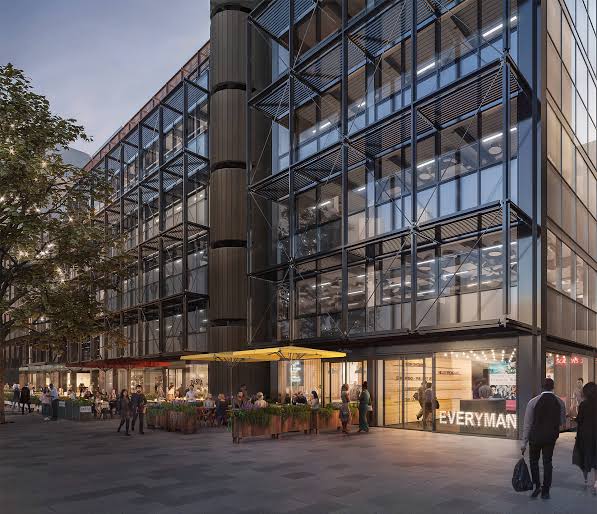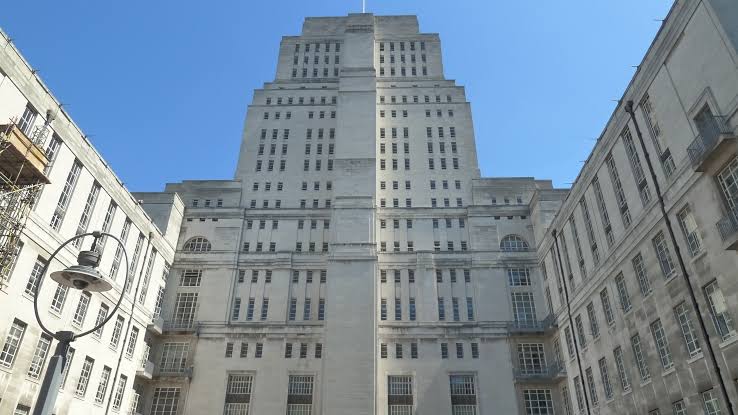This article examines ways in which a structural engineer can identify the potentials for reuse and refurbishment of buildings at the early conceptual design stages.

It is explicit– at least for those in the advanced world, that we’re headed towards a global warming increase of 2.0°C if something radical is not done to reduce the emission of greenhouse gases by 2050. The construction industry is regarded as one of the biggest contributors to this environmental emergency due to its 40% global greenhouse gas emission annually2. Rightly so, the annual demand for steel and cement, the direct contributor of this greenhouse gases now amount to 2.5giga-tonnes, twice the value it was in the year 20001.
Structural engineers have a very important role to play towards achieving Net zero by 2050. One of the major strategies, structural engineers can implement towards reducing global emissions is to reuse and refurbish existing buildings rather than demolish them. Total replacements of structures through demolition doesn’t only increase these gas emissions but is bound to continue to stress the finite natural resources on the planet2. Hence, since May 2019, structural engineers, the world over, have acknowledged the extreme seriousness of this situation. Except, of course, those in the less advanced world, still plagued by a plethora of building collapses. Societies where 21 floors of building fall to the ground un-forced, amid plans underway to demolish another twin 14 storey buildings before another catastrophic failure would ensue. Perhaps, for engineers in these civilizations ‘Building Collapse’ can be considered to be more pressing concern than the ‘Climate Emergency.’ Sadly, this is supposed to be the 21st century – it really is the 21st century!
Forget the frequent cases of self-inflicted building collapses in the underdeveloped worlds and focus on the subject – reuse and refurbishment as a strategy in the climate emergency. The declaration by structural engineers recognizes that reversing the effect of climate change need positive measures. One of those measures is as stated earlier which is to reuse and refurbish existing structures for prolonged usage as a substitution for demolition whenever there is a practicable choice.
This article will examines ways in which a structural engineer can identify the potentials for reuse and refurbishment of buildings at the early conceptual design stages.
What are the Benefits of Refurbishment?
It is often believed by structural engineers who work in new development that refurbishing existing building is a compromise. This could be true, but to the extent that there are numerous examples of existing buildings being refurbished into some of the most astonishing and dynamic spaces in the built environment.
According to reports, reusing existing buildings can cut embodied carbon by up to 70% compared to demolition and consequent reconstruction2. In addition to the environmental benefits, reusing existing buildings often provides greater profitable returns than demolishing. In fact, there is evidence suggesting a yield of 10-75% lower costs that tends to be brought back 15-70% times quicker, depending on the level of intervention3.

The Triton Square London (Figure 1) is a fantastic example of a building showcasing the potential value that can be realized from reusing existing building. This is a building that added three additional floors, increased the total floor area by up to 70% and achieved a SCORS A rating for the overall carbon per unit area of the scheme. Another fantastic example is 22 Bishopsgate, London where 100% of existing foundations from three buildings were reused to build the second tallest building in London (Figure 2). Notwithstanding, the vivid architectural statements made on these structures, the structural embodied carbon footprints were relatively low due to the far-reaching reuse prospects in the schemes.

Indeed, imagination is required at the conceptual design stage in order to identify the enormous potentials within any existing building, just as it is easy to miss out on the opportunities. Take the case of the Triton Square for instance, the client brief was to increase lettable area by 70%. Conventional procedure would have been to demolish the existing building and rebuild it to specification. However, rather than blindly following this option, Arup approach was to find all the prospects for reuse. One of these would be partially infilling the existing large central atrium, which made most of the dramatic difference in the extra floored area gained.
Reusing or refurbishing existing buildings offers countless benefits over new construction. Aside the potential environmental benefits, it is cost effective for clients, creates characterful places and preserves heritage value of communities2.
Identifying Opportunities
Engineers have the major role to play in influencing clients and architect to embrace reuse and refurbished buildings. Often times, the decision to reuse existing building requires more inputs from the structural engineer. It is however, easy to focus early on the threats and difficulties that may be encountered such that we miss out on the potential rewards. Certainly, reusing an existing building cannot be a ‘one size fits all’ solution, but carrying out an early assessment can reveal enthusing prospects that could otherwise have being missed.
The first step in identifying the potential for a reuse is the understanding of the client requirement. The following questions are worth answering.
- Is there any problem with the existing building, and can they be fully repaired or addressed?2
- Are certain aspects of the existing building inadequate and can they be adapted, instead of immediately concluding to rebuild? 2
- Does the existing building layout work with the proposed layout? 2
- What are the client’s key drivers? 2
An honest answer for all the above-listed questions could make all the difference. It would oftentimes inform a solution that doesn’t necessarily involve demolishing and building a new structure. Many times, the work may not be forthright, however, it’ll always be important to highlight the potential choices and solutions. These can be explained to clients using some examples of case studies such as those even highlighted in this article. An important area of consideration a client might be interested in is how the work would be carried out. For instance, could the building remain habitable while the building is being refurbished, perhaps using a phased construction? This could make a very significant difference to the client as the need for an interim adaptation will be limited, eliminating the need for a temporary relocation.
The Checklist
Prior to having a conversation with the client and architect, the engineer must be well equipped with the technical knowledge and confidence to approach the problem. He must understand the uniqueness enough to know that each problem must be considered on its own merits. The first point would obviously be understanding the existing building.
The subsequent sections explains what the structural engineer must consider at the planning stage.
Desk Study
A structural desk study is first on the checklist of things to do at the conceptual stage. It’s very key to developing a sound understanding of the existing building. For instance, the date of construction could indicate defects that might be potentially present. It could even be just knowing the architects or engineers who designed the building, this could indicate what materials, detailing and structural system used. This information is very useful as it may help in comprehending any load path modifications.
Existing information, might be retrieved from client records or from ‘local authorities’ records. It would usually include drawings, calculations, historical mapping, historical papers, articles, photographs and so on and on. The desk study collates this information towards understanding a building’s history in order to establish confidence in the structure, its structural system and load paths, and consequently to establish its potential for reuse.
Consider, the Triton Square for example, originally designed by Arup in the 1990s – same company that would later refurbish it. One of the prospects for refurbishment was availability of sufficient data on the existing structure, particularly those on the piling works found in the resident engineer records. This single piece of information was what mitigated a chunk of the risk of reuse and opened up the opportunity for additional resistance for structural elements through strengthening procedures.

Another instance is of course the office building at 1 Finsbury Avenue in London, designed by Arup in the 1980s (Figure 3). This building has been transformed into a flexible workspace with retail spaces, restaurants and a boutique cinema. Interrogating the original design document made available from archives opened up structural elements with spare capacity, consequently allowing for new loads to be introduced with minimal physical intervention. Reviewing the existing information also informed one of the structural strategies, which was to remove some floor areas in the basement to create a double-height space for the cinema, while maintaining the stability of the building2.
Also, 22 Bishopsgate is another stark example, it would have been absolutely impossible to reuse 100% of the existing piles of three buildings without any information about them.
Hence, we can agree that, the prospect of reuse and refurbishment is dependent on the availability of ample data on the existing structure. This would inform any work that would transform or reuse it. However, it must be stated that records cannot be solely relied on. For instance, where critical assumptions are made on elements on the basis of being constructed as drawn, then some collaborative evidence should at least be required. The next section highlights this.
Structural Form/System
The next item on the list is the structural form of the existing building. It’s very key to pinpoint and document all structural elements in the existing structure. This is very expected to be apprised at the level of desk study however, it may require further inspections and opening up.
For instance, it could be required to identify the lateral stability system of a steel frame where vertical bracings have not being found. Opening up the structure could be to confirm that the beams to columns connections are actually moment resisting. It could even be just to determine the credibility of a particular piece of information obtained from the desk study.
Understanding historical forms of construction employed is very key to determining the efficacy of buildings for refurbishment2.
Structure’s Condition
One of the first determinant in choosing to refurbish an existing structure is it condition. Usually, inspections, surveys and opening up will help to understand this. Where defects are present, this will be uncovered and would inform what action need to be carried out. However, with defects, there is the increased need to understand why they might have occurred in the first place, if any corrective measure at all, is to be effective.
The structural engineer must be satisfied that the building isn’t showing signs of distress after identifying the load paths and lateral stability system. It wouldn’t always be necessary to back calculate the capacities of the structural elements of an existing structure that hasn’t shown any sign of distress as it very possible that its historical performance justifies its future use.
Listed Status
Finally, for structural engineers working in certain jurisdictions, they must have to consider if an existing building is listed. Listed buildings are considered to be of national importance, thus they possess an extra layer of legal protection (Figure 4). In the U.K for instance, the listing of a building means that the building is of special architectural or historical interest. When a building is regarded as being listed, the building is resilient to controls over extension, alteration and demolition2.

Jurisdiction with listed buildings often have conservation accreditation systems that exist for members of professional bodies. These accreditation systems are obligatory for working on buildings protected by heritage legislation and those who have the skillset required to work on listed buildings are known as Conservation Accredited Engineers. In theory, any competent structural engineer can work on listed buildings. However, one must understand the distinction between a ‘conservation philosophy’ and the mere use of different forms of historical construction materials.
First, listings can be perceived by a structural engineer as a hindrance due to the lack of this ‘philosophy of conservation.’ Second, is the fact that engineering training is focused on the analysis and design of structures that wouldn’t fail. Where the philosophy of conservation has not being correctly understood, it can lead to unjustified interventions to the detriment of historical fabric2.
See: Reuse and refurbish in the climate emergency: A dossier of the Triton square, London
Conclusion
This article focused on the benefits of refurbishment. It highlighted some of the case studies ways in which structural engineers were able to identify and capitalize on the potential for reuse and refurbishment. It then gives a checklist of how to identify the potential opportunities for refurbishment at the early conceptual stages of a building. The next article in the sequence will focus on how to maximize these opportunities at the detailed design stage. Watch out!
Sources & Citation
- Construction Declares Climate and Biodiversity Emergency (2019) [Online] Available at: www.constructiondeclares.com/ (Accessed: August 2022)
- Fernández S., (2020) ‘An introduction to refurbishment: identifying opportunities the feasibility stage,’ The Structural Engineer, 100 (12), pp. 14–18 (Accessed: August 2022)
- Addy N. (2014) ‘Making sustainable refurbishment of existing buildings financially viable,’ In: Burton S. (ed.) Sustainable retrofitting of commercial buildings: Cool climates, Abingdon: Routledge (Accessed: August 2022).
Thank You!